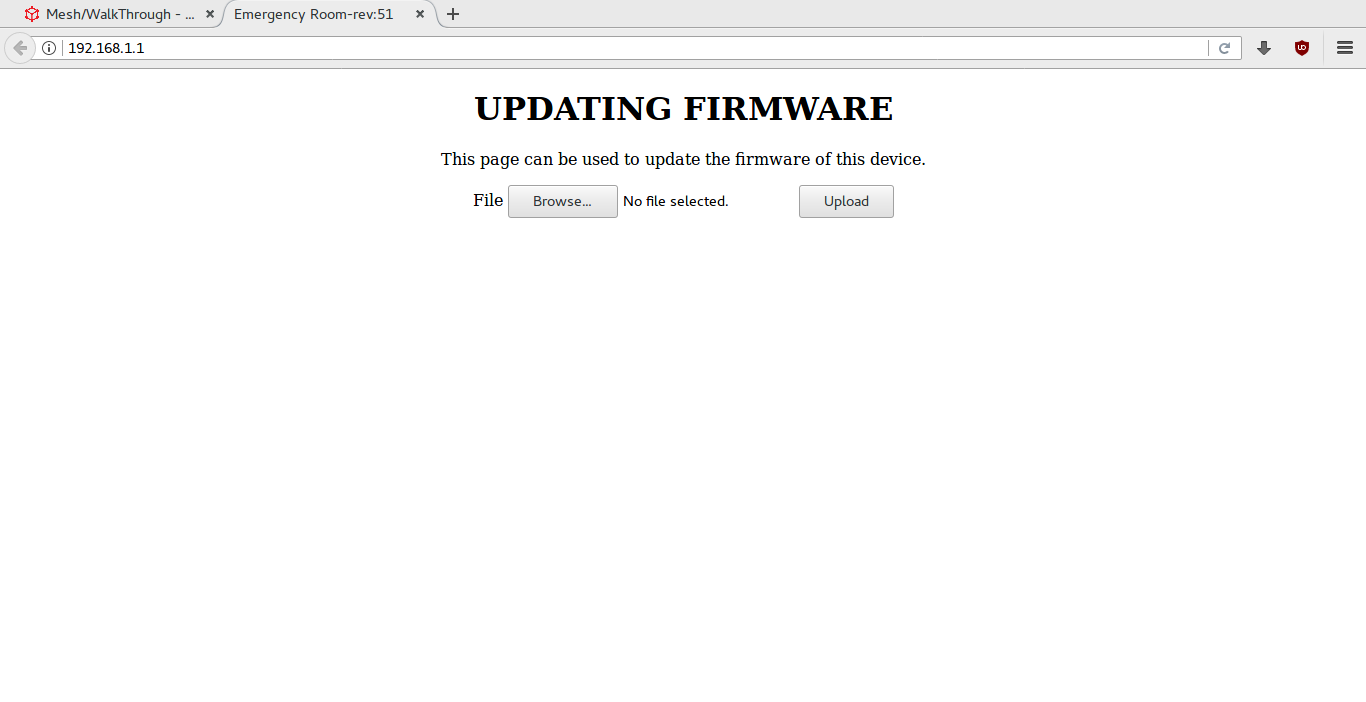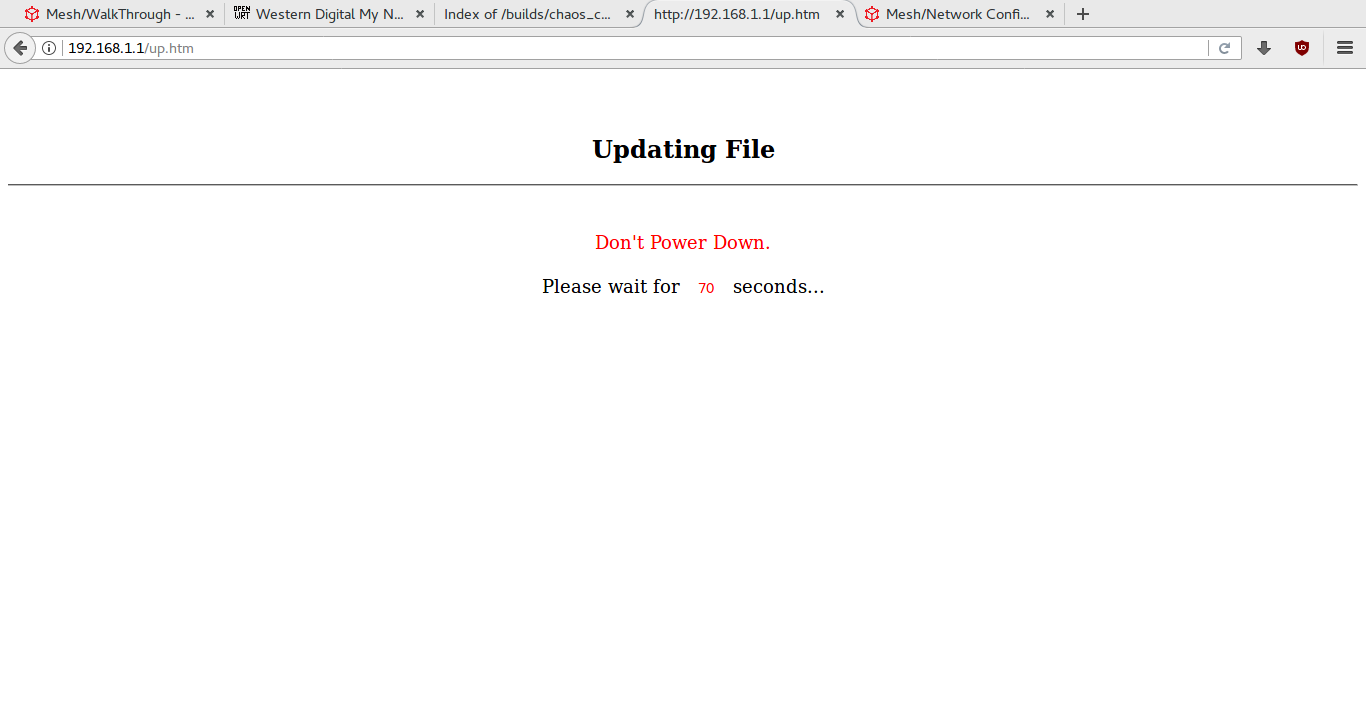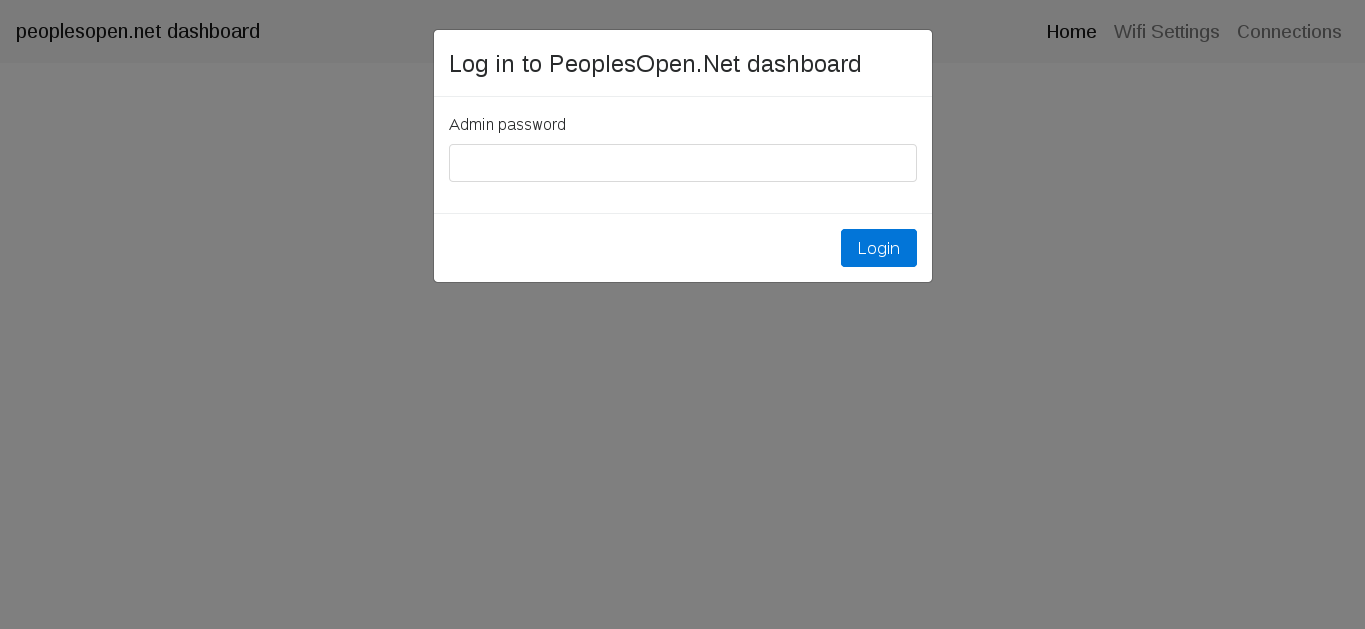Difference between revisions of "Mesh/WalkThrough"
| Line 52: | Line 52: | ||
* Gateway: 0.0.0.0 | * Gateway: 0.0.0.0 | ||
You can also use the | You can also use the commands: | ||
sudo | sudo ip link set eth0 down | ||
sudo ip addr add 192.168.1.10/24 dev eth0 | |||
sudo ip link set eth0 up | |||
where eth0 is the name of your ethernet interface found using ifconfig (other common interface names esp3s0...) | where eth0 is the name of your ethernet interface found using ifconfig (other common interface names esp3s0...) | ||
| Line 81: | Line 83: | ||
* Gateway: 0.0.0.0 | * Gateway: 0.0.0.0 | ||
Or use the | Or use the commands | ||
sudo | sudo ip link set eth0 down | ||
sudo ip addr add 172.22.0.10/24 dev eth0 | |||
sudo ip link set eth0 up | |||
where eth0 is the name of your ethernet interface found using ifconfig (other common interface names esp3s0...) | where eth0 is the name of your ethernet interface found using ifconfig (other common interface names esp3s0...) | ||
Revision as of 13:27, 14 January 2018
Congratulations on choosing to become part of a People's Open Network! This is a walkthrough for flashing a node (a home router) with the SudoMesh's sudowrt-firmware (a custom build of OpenWRT) and then configuring it with makenode (a custom javascript tool developed by SudoMesh). At the end of the walkthrough, you'll be able to plug in your router and join the mesh. The walkthrough assumes you're using a linux-ish OS (mac OSX should work also) and that you have basic knowledge of the terminal. The general idea of building your own mesh node consists of three steps, downloading or compiling custom firmware, flashing that firmware to the node (i.e. copying firmware to flash memory), and configuring the node to function as part of a mesh (with a software tool such as makenode).
Before you flash your router, it is recommended that you read the home node info to find out the router works as a mesh node.
Download/Build
Now that you have node, you will probably want to learn how to flash it with the latest sudowrt-firmware. The first step is to download the firmware image file for your supported router.
At the moment, we are supporting the following routers:
| Name | OpenWRT Doc | Firmware Image |
|---|---|---|
| TP-Link WDR3500 | OpenWRT Docs | firmware image |
| TP-Link WDR3600 | OpenWRT Docs | firmware image |
| TP-Link WDR4300 | OpenWRT Docs | firmware image |
| Western Digital MyNet N600 | OpenWRT Docs | firmware image |
| Western Digital MyNet N750 | OpenWRT Docs | firmware image |
Builds for other routers can be found on our builds server, though there is no guarantee the firmware will work with any given router.
Alternatively, you can build your own copy of the firmware images by following the guide in the sudowrt-firmware source.
If you do not want to use a SudoMesh's OpenWRT image, you can also install a standard OpenWRT release and configure it from scratch.
Flash/Upload
Once you have a copy of the sudowrt-firmware intended for your router, you can proceed with flashing it to your router. There are different techniques for flashing each of the routers. Use the links above to the OpenWRT wiki and follow the instructions there to flash the router with the firmware you've downloaded.
For convenience, if you have a Western Digital MyNet N600 or N750, follow these instructions:
Reset your new router
- Plug one end of the Ethernet cable into your laptop.
- Plug the other end of the Ethernet cable into one of the normal ports on the router (not the Internet/WAN port).
- With the router plugged in and power turned off, push a pin into the reset hole and hold it.
- With the pin held down, turn on the router power button.
- Watch the front blue light - they will flash on and off a few times.
- Once the front blue is flashing, you can let go of the pin.
Configure your computer's network settings
On your laptop edit your network settings to reflect the following:
- Network Manager Method: Manual
- IP Address: 192.168.1.10 (some devices will only accept from this IP)
- Subnet Mask: 255.255.255.0
- Gateway: 0.0.0.0
You can also use the commands:
sudo ip link set eth0 down sudo ip addr add 192.168.1.10/24 dev eth0 sudo ip link set eth0 up
where eth0 is the name of your ethernet interface found using ifconfig (other common interface names esp3s0...)
See Network Configuration Guides: Linux Mac
Upload sudowrt-firmware
In your web browser:
- Go to http://192.168.1.1, if the reset was successful, you should see the following page:
- Click 'Browse' and select the firmware file you downloaded
- Click Upload and you will be taken to an exciting countdown timer:
Note: Sometimes the firmware upload will not complete. After you click on 'Upload' You should get a page with a countdown of 120+ seconds. If this does not occur, reboot the router with the pin reset button depressed (as noted above), and try again.
makenode/Configure
After flashing sudowrt-firmware to your router you will need to configure it work on a People's Open Network.
Reconfigure your computer's network settings
A freshly flashed node automatically sets its IP address to 172.22.0.1. You will need to configure your laptop to use the following network settings to communicate with the node.
- IP address: 172.22.0.10
- Subnet mask: 255.255.255.0
- Gateway: 0.0.0.0
Or use the commands
sudo ip link set eth0 down sudo ip addr add 172.22.0.10/24 dev eth0 sudo ip link set eth0 up
where eth0 is the name of your ethernet interface found using ifconfig (other common interface names esp3s0...)
See Network Configuration Guides: Linux Mac
To test that the flashing was successful, feel free to try connecting to your unconfigured router by opening a browser and navigating to https://172.22.0.1 if the flash was successfull you should be brought to the following screen:
After you have successfully flashed your router with OpenWRT, you will need to use makenode to complete the setup. makenode registers your node on the peoplesopen network, resulting in the assignment of a 64 IPv4 address subnet to your node, in addition to applying basic configuration.
Preparing your laptop for makenode
You will need to install the dependencies for makenode.
Linux
If you are working with a fresh installation of one of the operating systems listed in the compatibility checklist, you will need to install a few pieces of software. To install them, open your terminal and enter the following commands.
sudo apt update
sudo apt install curl git dropbear
curl -o- https://raw.githubusercontent.com/creationix/nvm/v0.33.2/install.sh | bash
export NVM_DIR="$HOME/.nvm" # or you can close and reopen your terminal before using nvm
nvm install 7.10
OS Compatibility checklist
| OS | Compatible | Link to ISO | Notes |
|---|---|---|---|
| Ubuntu 16.04 LTS | yes | http://releases.ubuntu.com/16.04/ | |
| Ubuntu 14.04 LTS | please verify | http://releases.ubuntu.com/14.04/ | |
| Debian 9.3 Stretch | yes | https://www.debian.org/distrib/ | |
| Debian 8.1 Jessie | yes | https://www.debian.org/releases/jessie/debian-installer/ | |
| Arch Linux | yes | https://www.archlinux.org/download/ | you may have to build dropbear from source |
Mac
Install the Homebrew package manager, then install the required binaries.
brew install nodejs brew install git brew install npm brew install dropbear brew install gnu-tar brew install fakeroot
Note: Windows is not currently supported, main problem is with Dropbear, which has no known ports for Windows.
Install and run makenode
From your terminal, run the following:
git clone https://github.com/sudomesh/makenode.git cd makenode npm install cp settings.js.example settings.js
The default settings in settings.js should suffice in most cases, but if you need to make changes, do them in settings.js.
Make sure the Ethernet cable is connected to the 4th port on the router.
Once your network configuration is refreshed, use the following command to run the script and configure your node:
./makenode.js
Now the configuration wizard will ask you a number of questions:
- "enter valid hostname" - this is the host name when you SSH into the node - For info on what constitutes a valid hostname, see: valid characters of a hostname
- "max share upstream bandwidth" - how much of your home network upstream bandwidth you wish to share with the mesh network, measured in kbps (kilobits per second). So if you'd like to share 10mbps (megabits per second) enter "10000" or if you want to share 256kbps (kilobits per second) enter "256". You may want to run a speed test to find out how much bandwidth you have and determine how much you want to share.
- "max share downstream bandwidth" - how much of your home network upstream bandwidth you wish to share with the mesh network - eg. "512" would share 512 kbps
- "admin user password" - this is the password for for changing wifi settings on the node
- "root user password" - this is the root password for the router - Make sure that your root password is strong! If you don't enter a root password, a strong one will be generated and will be logged to screen. It's generally preferable to not use the root password at all and instead add an ssh key to the device - see details below.
- "wifi transmit power" - set this to 23 dBm (which is equivalent to 200 milliwatts)
- "operator name" - this is the name that the network admins can associate with the node - so use a unique name like your first name or location name
- "private wifi SSID" - this is the wireless SSID name for the private wireless network that will run on this router
- "private wifi password" - this is the password for the private wireless network that will run on this router - it must be at least 8 characters long
Testing
After you're finished with the makenode configuration, your home node should be available for connections via your private WiFi SSID. Additionally the public SSID 'peoplesopen.net' will be available.
A third interface named 'pplsopen.net-node2node' will be detectable as well. This is the interface used for the nodes to mesh with each other.
At this point you're setup. For more information on using your node, such as accessing the web-based management interface, see Home node info
For more technical details on the internals of the home node, see the Mesh/Technical_Overview
For more in depth testing procedures, see our mesh node operator's manual.
Troubleshooting
You may need to replace the `node-uuid` module with `uuid` for makenode to work, to fix this using the following commands:
npm uninstall --save node-uuid npm install --save uuid
If you get the error "no such file or directory", open a new terminal and run this command to ensure that node points to your NodeJS executable:
sudo ln -s nodejs node
In the new terminal, return to the 'makenode' source code directory and try again:
npm install ./makenode.js
Flashing Extender Nodes
If you would like to make long distance point-to-point connections between two or more home nodes, you'll want to setup an extender node (a roof mounted antenna).


